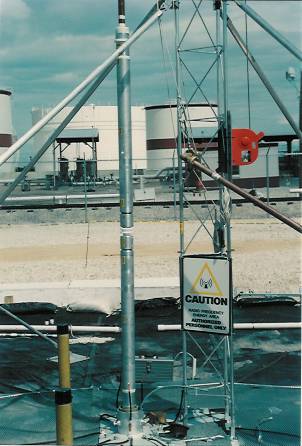Company



JR Technologies LLC. (JRT) is a world leader in pioneering new business solutions of innovative radiofrequency and microwave devices and systems and high voltage for sustainable oil and gas recovery, environmental remediation in difficult environments such as fractured bedrock, and medical devices to assist in providing support where applicable to our most current medical problems.
Electromagnetic energy and their fields are employed to manipulate and control molecules in complex material environments to achieve innovative and timely solutions. Designing such systems at both the molecular level and full scale while understanding the interaction of fields with materials greatly improves on the economics and performance over more conventional technologies.
We do the following:
- Develop, test, and patent subsurface electromagnetic energy (SEM) systems without the need of water and chemicals for economic recovery of oil and gas
- Pioneer new electromagnetic methods of treatment and product recovery or extraction such as for tar sands, coal, coal tar, oil shale, wood torrefaction, heavy oil, gas in shale, infested grains
- solve difficult environmental remediation problems using radiofrequency heating (RFH)
- develop novel microwave medical devices
- provide scientific and engineering expertise in a wide range of electromagnetic applications
- provide electromagnetic and high voltage engineering testing services
- patent new applications of electromagnetic energy
JRT’s patented energy extraction technology for oil and gas recovery and environmental applications consists of a radiofrequency generator connected by cable to specially designed antennae. The antennae are placed in an array of boreholes drilled to maximize energy delivery to a specific area/volume in a formation. RF energy maintains a significant advantage over conventional thermal techniques (e.g., steam, resistive or conductive heating) in that the energy is much more efficiently delivered through the formation (host) to the target (petroleum). RF energy propagates evenly throughout the host, be it solids, liquids or gases thereby minimizing energy absorption by the host, a significant source of energy loss in rock using conventional heating methods.
The unique ability of RF energy to preferentially heat the target, organic compounds such as petroleum, over the host, rock or other inorganic materials, opens up many new applications of this technology in oil and gas extraction:
-
- To enhance liquid mobility by reducing viscosity;
- To desorb gas held in micro-pores within tight formations;
- To induce micro-fracturing in a rock formation necessary to extract oil or gas in economically recoverable quantities; and
- To fractionate crude oil within the formation enabling sequenced recovery of lighter or heavier product fractions at the wellhead.
No water, chemicals, proppants, or hydrofracking methods are required with JRT’s extraction technology. In comparison to current technologies, RF reduces resource use, waste generation, environmental risks, stakeholder opposition, and cost.
- The elimination of water alone as a prerequisite to hydrofracking opens the potential for extraction of extensive unconventional reserves in many arid climates of the world where production is currently not economically viable due to the scarcity and value of water as a vital life-sustaining resource. The combined benefits of RF to both the extraction and recovery process pose substantial economic, environmental and competitive advantages to the petroleum and energy industries globally. The recent shift in focus to development of unconventional oil and gas reserves globally creates an enormous global market potential for JRT’s RF technology. The economic, environmental and social benefits provided by JRT’s RF technology over conventional extraction methods also satisfy the demands of the investment, regulatory and public communities for more sustainable technologies in meeting global energy demands, a vital component to the commercial marketability of the technology.
